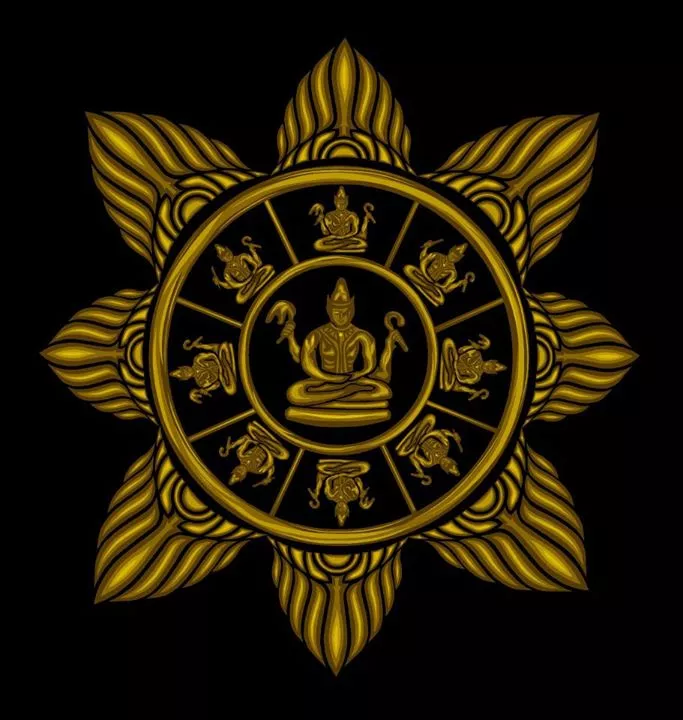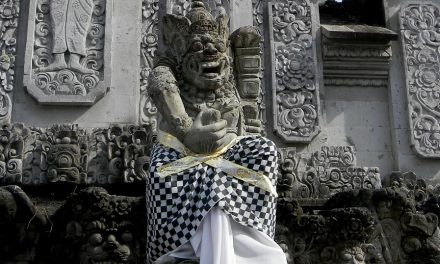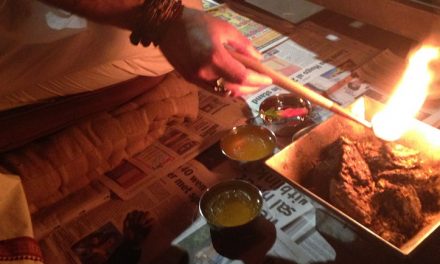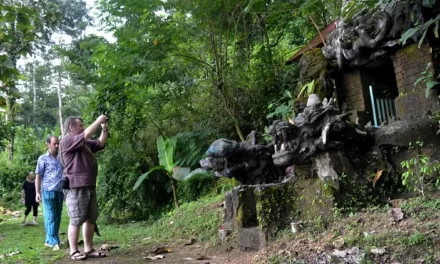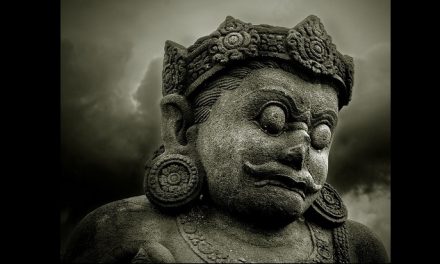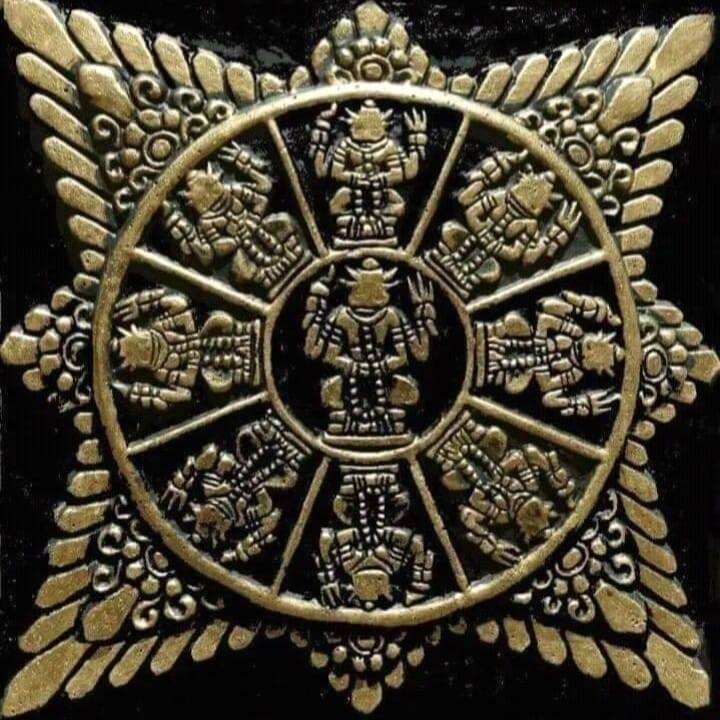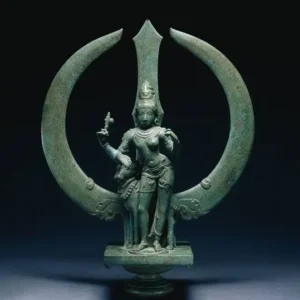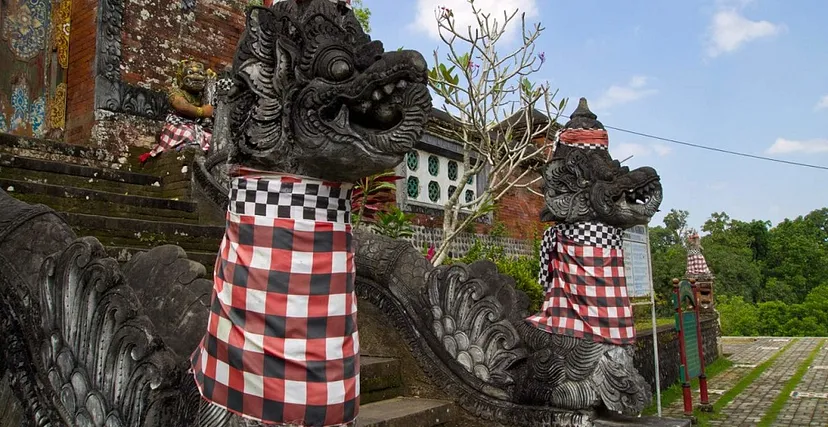
Originally posted on Medium
In Bali, you can see the Tridatu black, red and white colors in many places and ornaments.
Tri Datu (Datu is an ancient Southeast Asian word related to the Indonesian Ratu, or king) symbolizes the three first manifestations of God – Brahma (the creator), Visnu (the preserver) and Shiva (the destroyer), or the Trimurti.
On a mundane level, the black evokes powerful and protects from bad spirits, the red evokes creativity and bravely, and white evokes spirituality and goodness.
Tridatu in tatebus threads
The three-colored thread is called tatebus. Indonesian Hindus attach the threads to their bodies, around the right wrist (a red thread), around the ankle (a black thread) and attached to the ear (a white thread).
The threads can also be wound together around the right wrist or placed on the crown of the head.
No matter how the it is worn, the threads are placed or attached with prayers to endow the recipient with power, strength, and longevity. It is also used to calm the mind so that it won’t be influenced by negative thoughts.
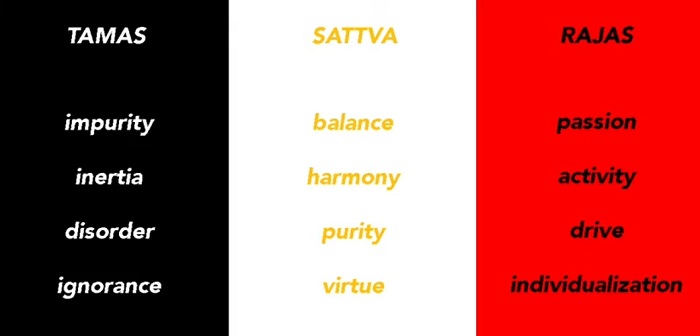
The Gelang Tridatu bracelet
The Gelang Tridatu (‘Three Kings’ or ‘Three Devas’) bracelet worn by Indonesian Hindus consists of 3 colored yarns and is purified by holy water and given to the devotee by a priest.
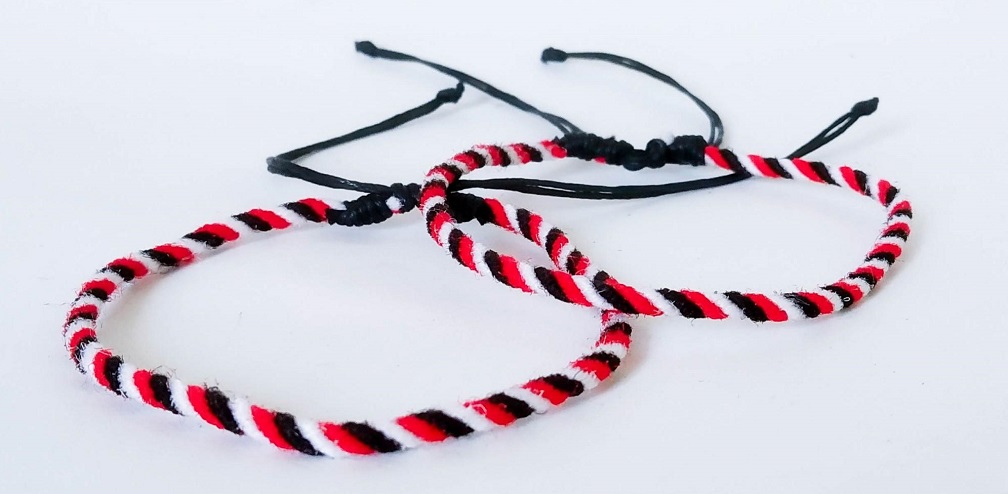
Tridatu as Ceremonial Colors
The Tridatu is an essential part of religious rituals, especially during the Manusa Yadnya and Mabya Kala ceremonies that happen at Galungan (the Indonesian equivalent to the Christmas – New Year period).
During sacrifices as well, an animal is sacrificed to provide the blood to make the red color, while the white is made from lime or chalk and the black made from charcoal.
For a Ngaben (cremation ceremony), Tridatu threads called panjang-hilang are used (meaning “long and lost”, because they are consumed in the fire of cremation).
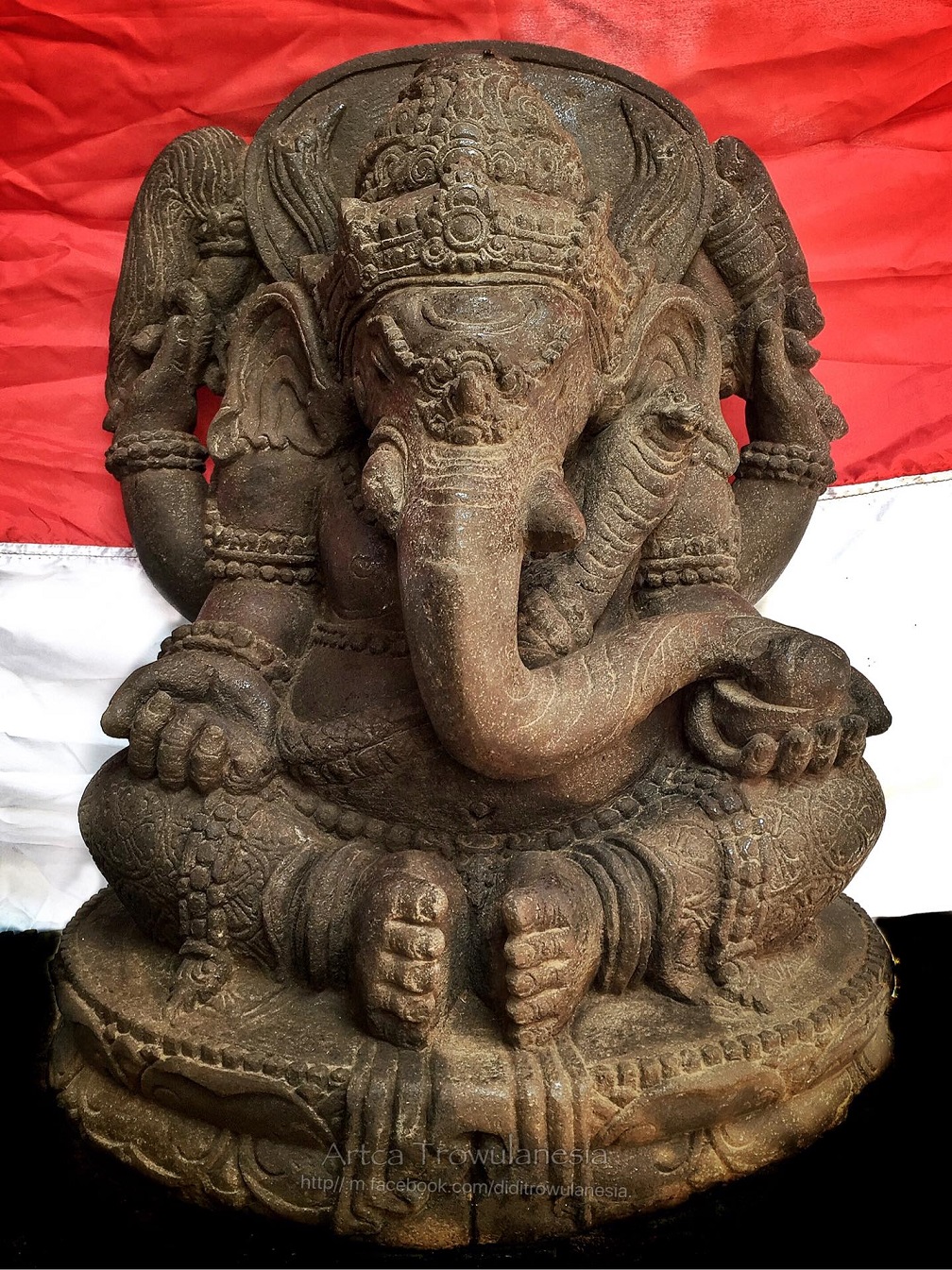
Image source – Didi Trowulanesia
Tridatu in Sambangan
On specific occasions, the Tridatu is used as a cloth worn by the male inhabitants of a village, the black being worn as a shirt, the white as an under-skirt sarong, and the red as an over-skirt.
This dress is worn more generally, when the people celebrate Nyepi (the Day of Silence). When people wear the Tridatu dress, they are called sambangan, which implies that they are awaiting a blessing or help from God.
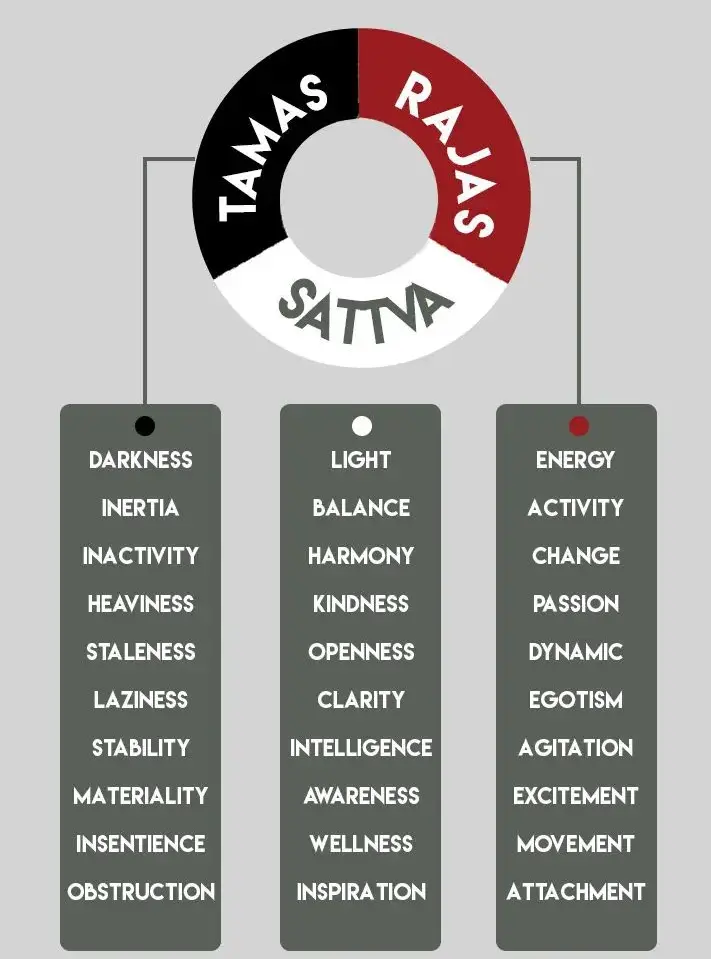
Tridatu in Sikepan
During the 5th and 6th months of the Balinese calendar, you see the Balinese wearing sikepan. There, the three colored threads are plaited and the ends tired together forming a necklace or bangle.
The sikepan has various items attached such as old coins with the holes in the middle, or Jangu (medicinal plants and roots). Without the coins and Jangu, the entwined threads are not sikepan and are merely intended as personal adornment.
Sikepan is a marker of those asking God for a blessing and, more likely, protection from the bad spirits that infest the earth during the 5th and 6th months of the Balinese Calendar.
A person seen wearing the sikepan can also be having an exorcism (Tilem) to rid the area or home of bad spirits.
